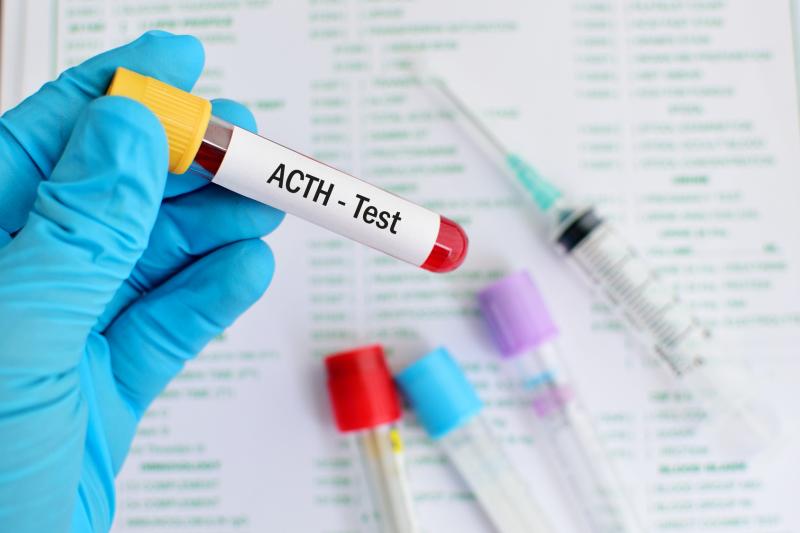 The first step in distinguishing the type of Cushing’s syndrome is a blood test for the measurement of ACTH obtained in the morning.
The first step in distinguishing the type of Cushing’s syndrome is a blood test for the measurement of ACTH obtained in the morning.A recent meta-analysis has found that diagnostic tests for Cushing syndrome (CS) are highly sensitive and specific, with dexamethasone suppression test (DST) being the most sensitive and the 24-hour urinary free cortisol (UFC) being less sensitive. Specificity is comparable among first-line tests.
The investigators searched the databases of PubMed, Embase, Scopus, Web of Science and Cochrane from inception until 3 August 2018 for studies performed in adults that determined the accuracy of one or more diagnostic tests: overnight 1-mg DST, 2-day low-dose DST (2d DST), 24-hour UFC, late-night salivary cortisol (LNSC), midnight serum cortisol (MSC), and the dexamethasone-suppressed corticotropin-releasing hormone (dex-CRH) and desmopressin (dex-DDAVP) tests. Two investigators independently extracted data and performed methodological evaluations.
The meta-analysis included 139 studies involving a total of 14,140 participants. The sensitivity, specificity, positive likelihood ratio and negative likelihood ratio estimates for DST were 98.6 percent (95 percent confidence interval [CI], 96.9–99.4 percent), 90.6 percent (95 percent CI, 86.4–93.6 percent), 10.5 (95 percent CI, 7.2–15.3) and 0.016 (95 percent CI, 0.007–0.035), respectively. The corresponding values for 2d-DST were 95.3 percent (95 percent CI, 91.3–97.5 percent), 92.8 percent (95 percent CI, 85.7–96.5 percent), 13.2 (95 percent CI, 6.47–27.1) and 0.051 (95 percent CI, 0.027–0.095).
The respective estimates for other diagnostic tests were as follows: UFC 94.0 percent (95 percent CI, 91.6–95.7 percent), 93.0 percent (95 percent CI, 89.0–95.5 percent), 13.3 (95 percent CI, 8.47–21.0) and 0.065 (95 percent CI, 0.046–0.092); LNSC 95.8 percent (95 percent CI, 93.0–97.2 percent), 93.4 percent (95 percent CI, 90.7–95.4 percent), 14.6 (95 percent CI, 10.3–20.7) and 0.045 (95 percent CI, 0.030–0.066); MSC 96.1 percent (95 percent CI, 93.5–97.6 percent), 93.2 (95 percent CI, 88.1–96.3 percent), 14.2 (95 percent CI, 7.96–25.2) and 0.042 (95 percent CI, 0.026–0.069); and dex-CRH 98.6 percent (95 percent CI, 90.4–99.8 percent), 85.9 (95 percent CI, 67.6–94.7 percent), 7.0 (95 percent CI, 2.80–17.6) and 0.016 (95 percent CI, 0.002–0.118).